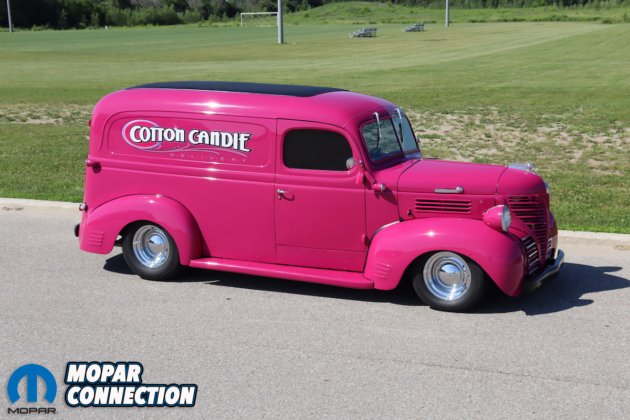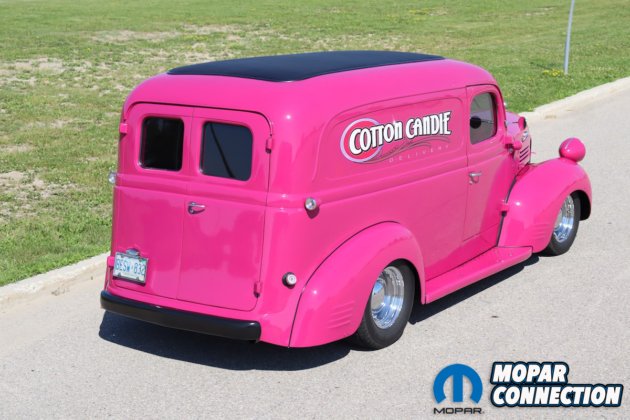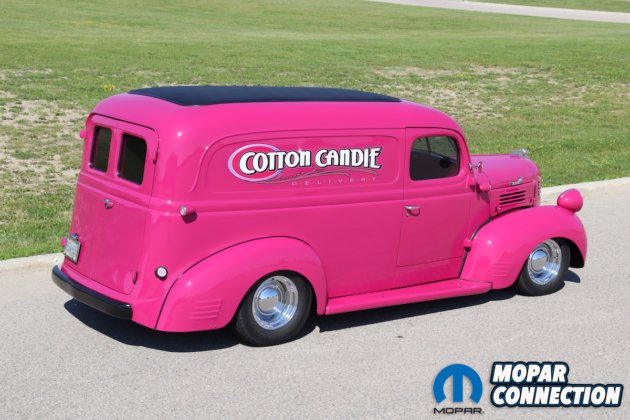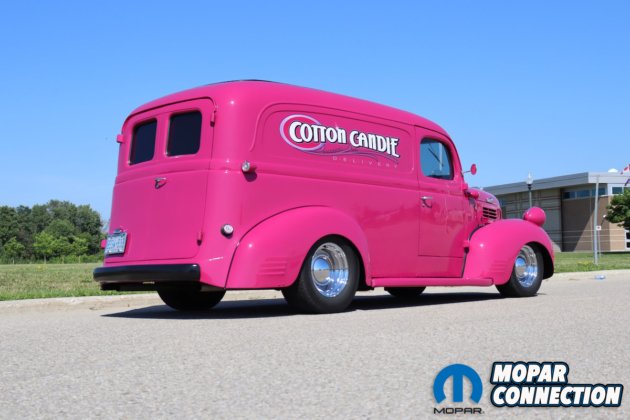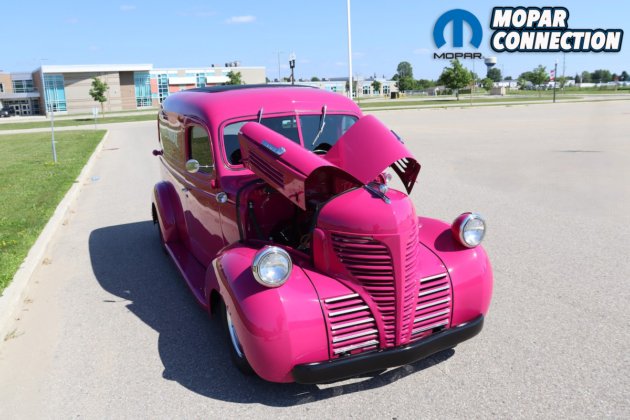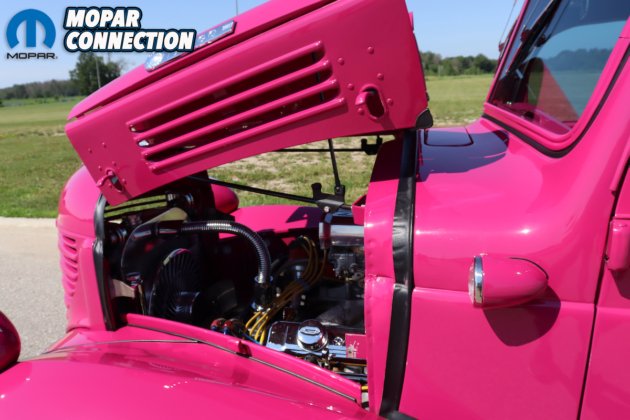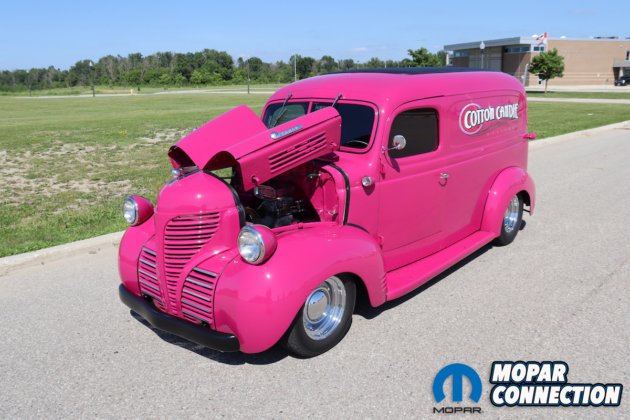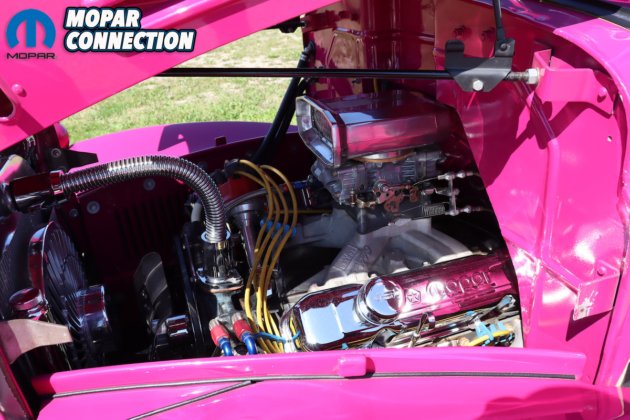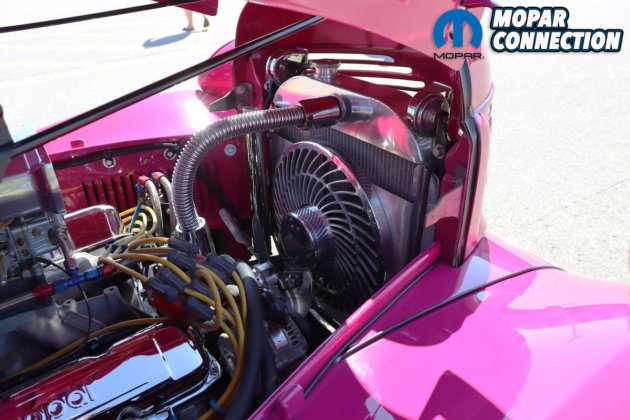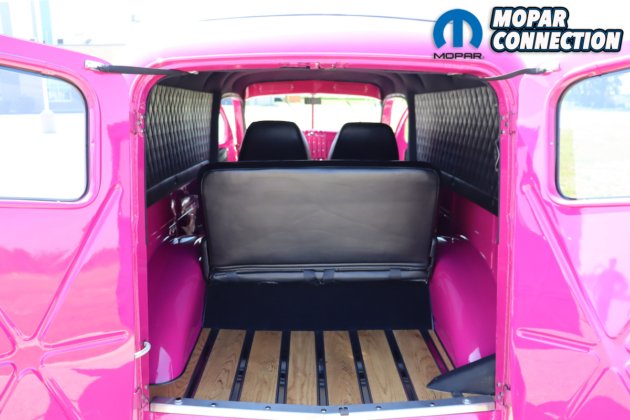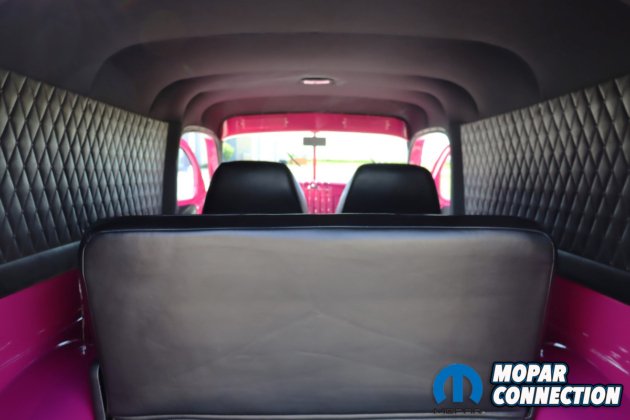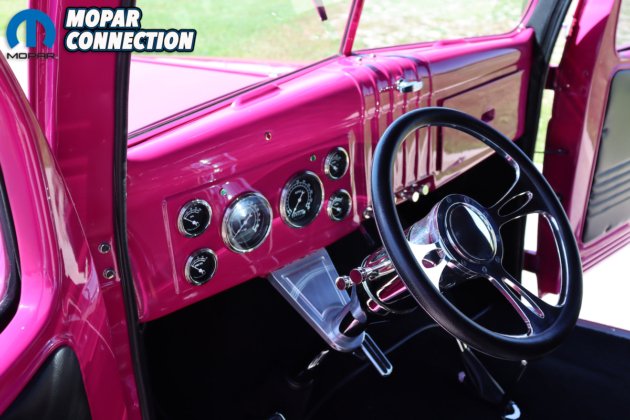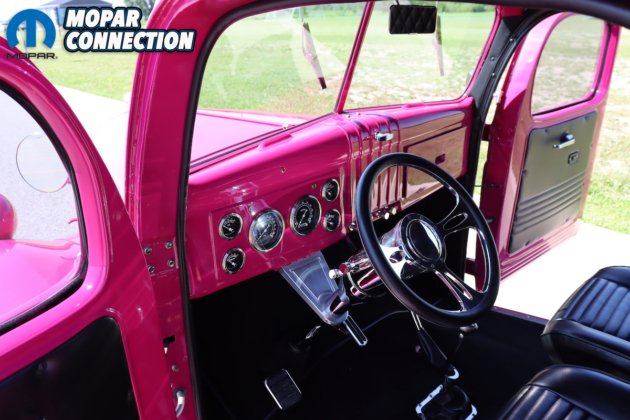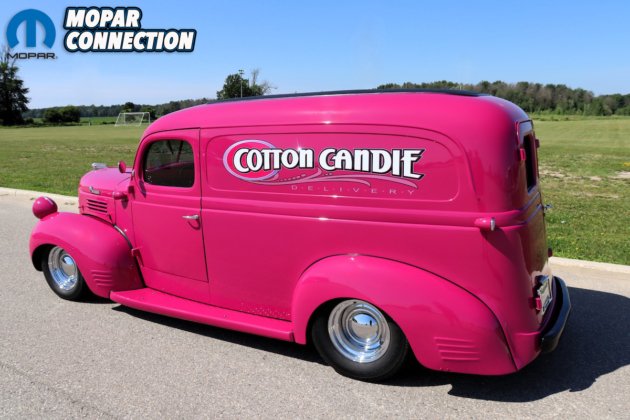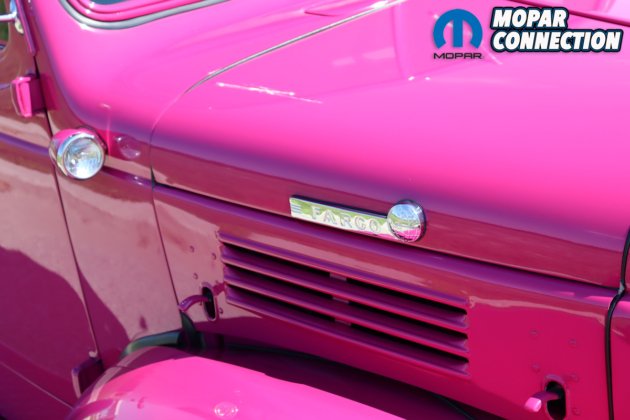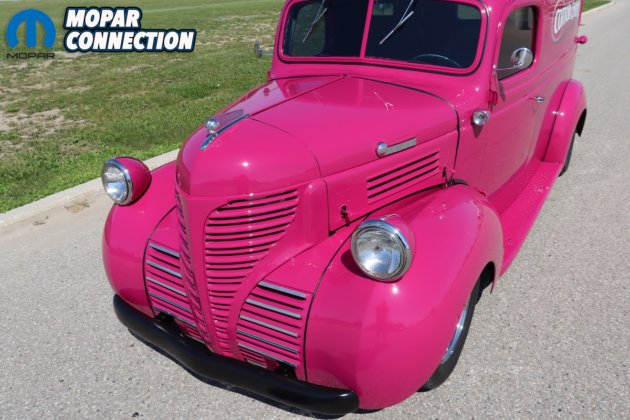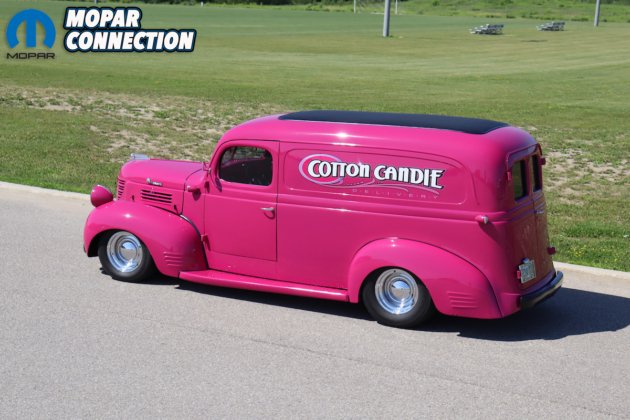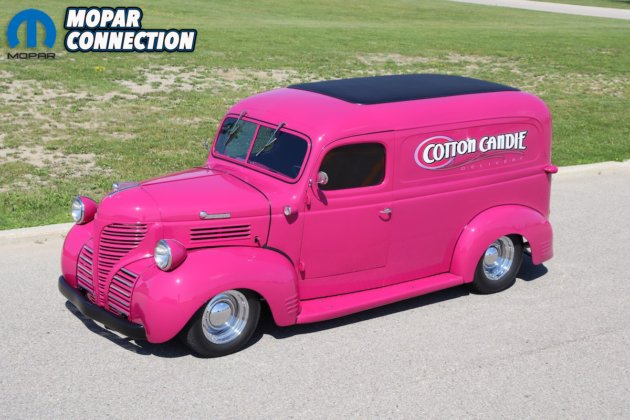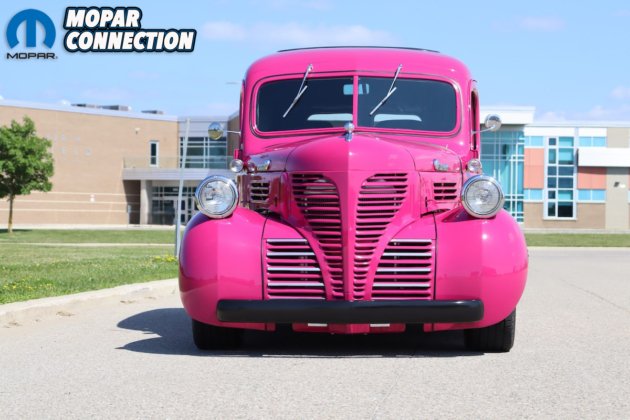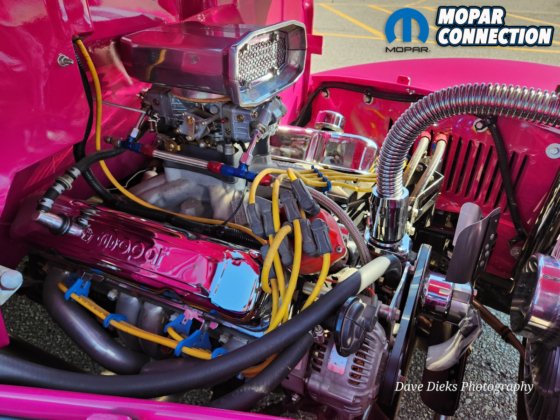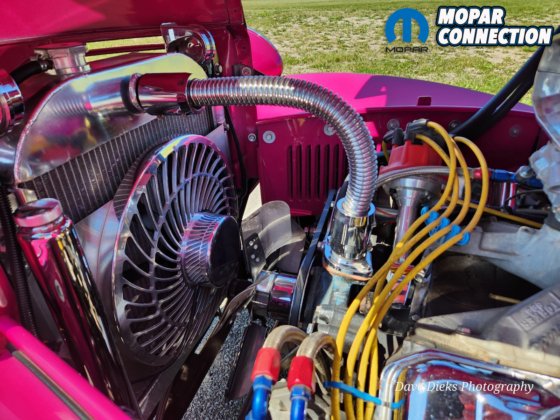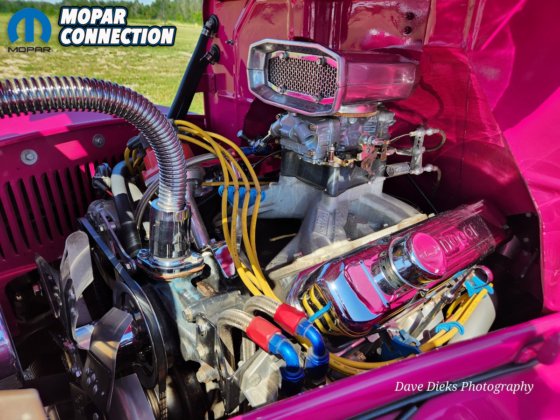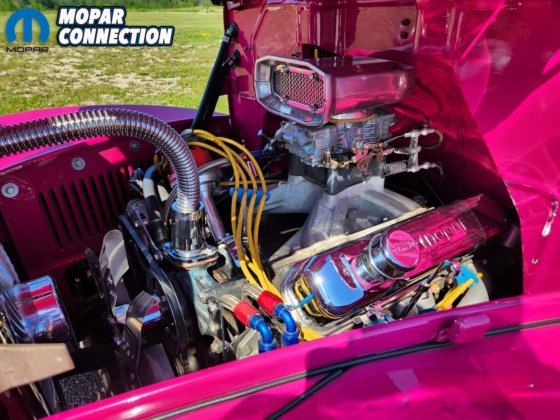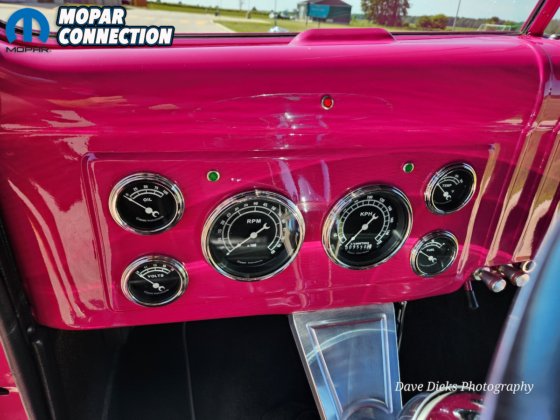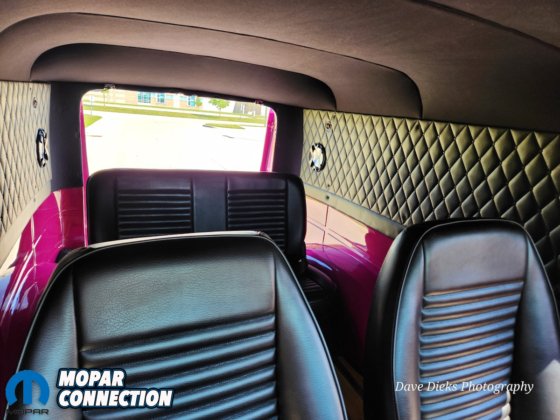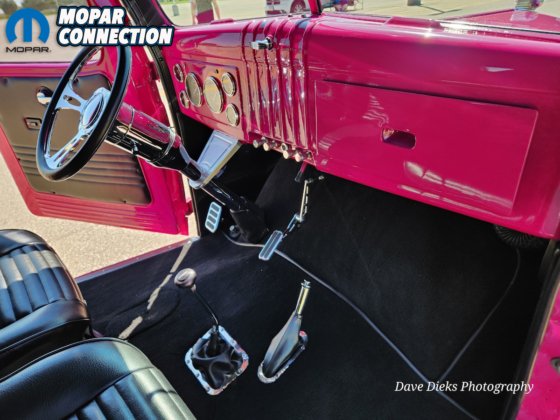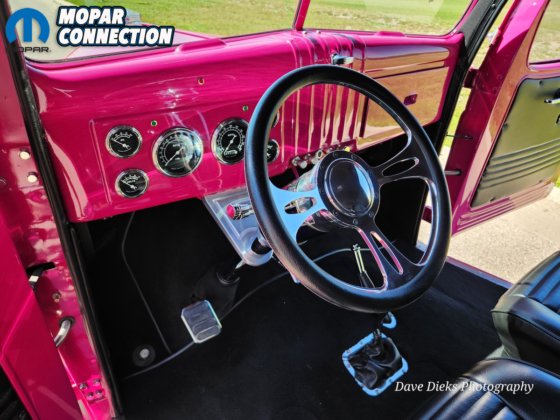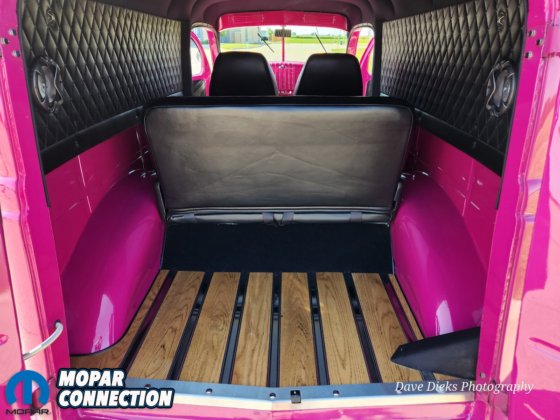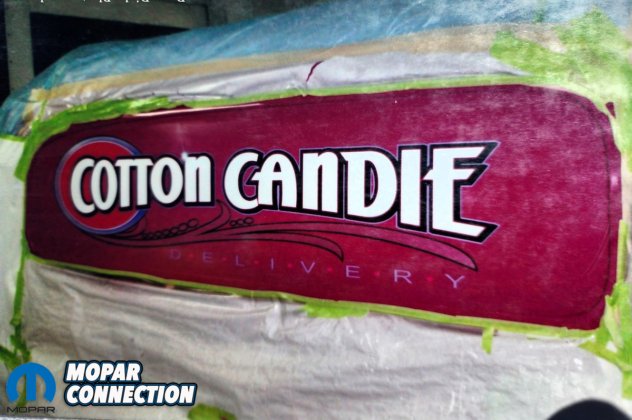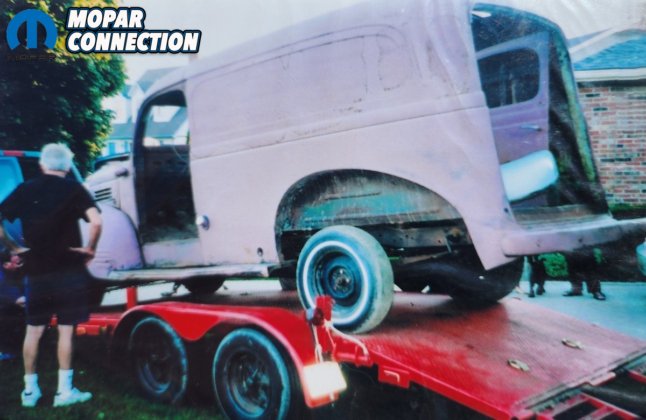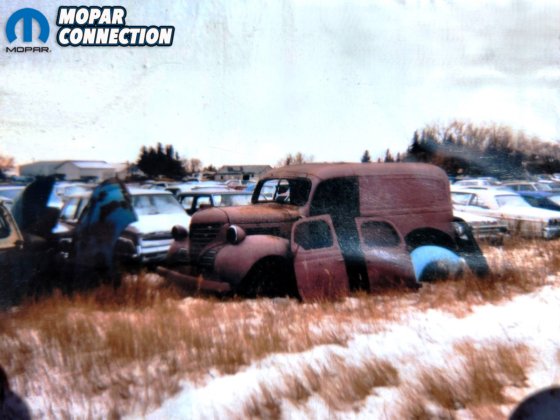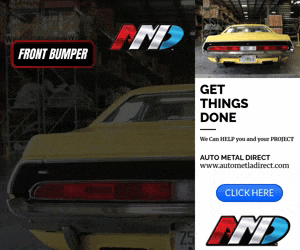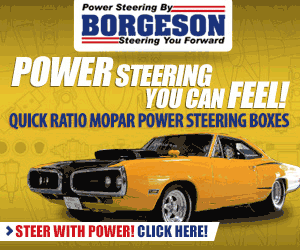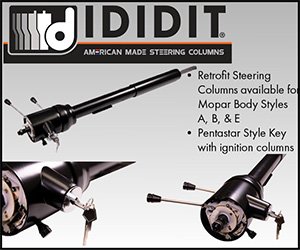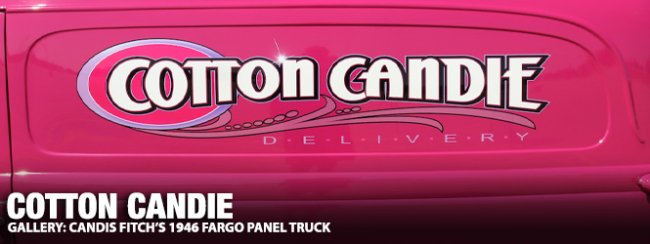
In 1928, Chrysler acquired the Fargo Motor Car Company and introduced its own line of Fargo trucks. Following this acquisition, Chrysler also purchased the Dodge Brothers Company, thereby expanding its product offerings to include trucks under the Dodge and Graham Brothers brands. Thereafter, Fargo trucks became virtually indistinguishable from Dodge models except for minor differences in trim and branding and were distributed through Chrysler-Plymouth dealerships. Fargo trucks were also exported to other countries.
Fargo truck sales in the United States ended in the 1930s, with Plymouth-branded trucks introduced as their replacement in 1937. However, the Fargo name endured in Canada until 1972. This was largely due to the country’s limited dealership network, which allowed Fargo trucks to be sold through DeSoto-Plymouth dealers, while Dodge trucks remained exclusive to Dodge-Chrysler dealerships. Internationally, Fargo trucks found markets abroad—thanks in part to Canada’s membership in the Commonwealth. This affiliation enabled Canadian-made vehicles to be exported to other member nations without incurring tariffs, making Fargo an attractive option for global distribution.
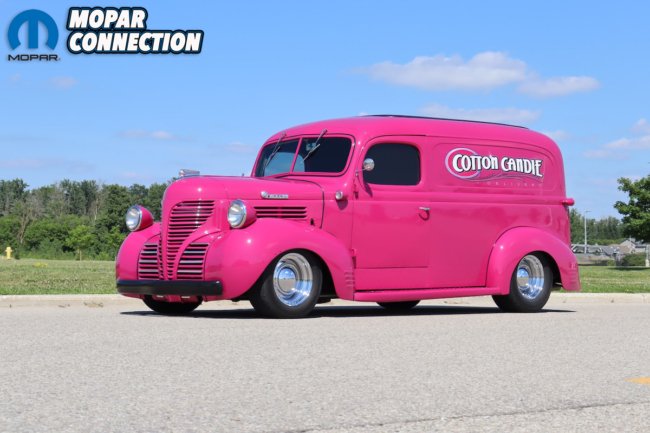
In December 1945, Chrysler Corporation resumed regular truck production, drawing on pre-war designs to shape the 1946 model year. The lineup featured a diverse array of body styles, including pickups, panel trucks, and cab-over-engine (COE) configurations for heavier-duty applications. This 1946 Fargo Panel truck is a FL4 model, built at Chrysler’s plant in Windsor, Ontario. Under the hood, it carried a 218-cubic-inch inline-six engine, delivering 95 horsepower, paired with a three-speed manual transmission—a reliable setup for its time.
There are no known production records for this particular model, but one thing is clear: it’s exceptionally rare. Most Fargo trucks from this era were either worked to death or left to decay, becoming rusted lawn ornaments outside rural businesses. Their tough practicality meant that they were rarely saved after a hard life and being put out to pasture, eventually succumbing to the elements. That makes surviving examples like this one all the more special.
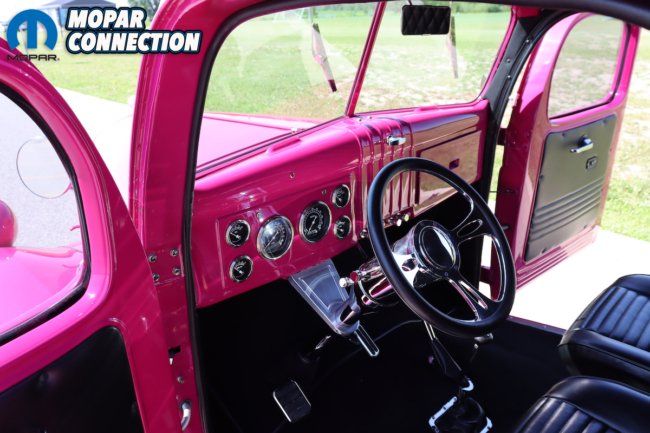
Though much of this truck’s journey remains lost to time, one chapter is certain: it spent its final working days resting in a quiet field in Saskatchewan. For a machine built to roam wide and work hard, it was a fitting—if somber—end. But this Fargo was not destined to rust away in obscurity. Against the odds, it rose from the grave of neglect, restored to life and honored as a rare survivor of a rugged era.
What truly sets this story apart is its caretaker: Candis Fitch. In a world where classic vehicle ownership is often dominated by men, Candis brings a refreshing and powerful presence. Her passion for this rare 1946 Fargo FL4 Panel Truck defies stereotypes and redefines what it means to preserve automotive history. Inspired by her father, Bob, who still drives his 1940 Dodge Sedan, the car that first sparked her interest when she was just nine, Candis has become a devoted steward of this unique piece of Canadian heritage.

Candis was instantly captivated. Helping her dad tinker with the car and meticulously detailing it quickly became one of her favorite pastimes. As the family began frequenting car shows together, her passion for vintage vehicles deepened. But it was at a show in Cambridge, Ontario where her love for panel trucks truly ignited—she caught sight of a hot rod panel truck.
“I remember it so clearly,” Candis recalled. “It was a beautiful black panel truck with an eerie cemetery scene airbrushed on the side panel. It was absolutely stunning!” From then on, Candis knew she wanted a panel truck of her own. It wasn’t just admiration—it was inspiration. From that day forward, she and her father, Bob, would daydream together about building one, imagining the possibilities and sharing a vision that would eventually become reality.
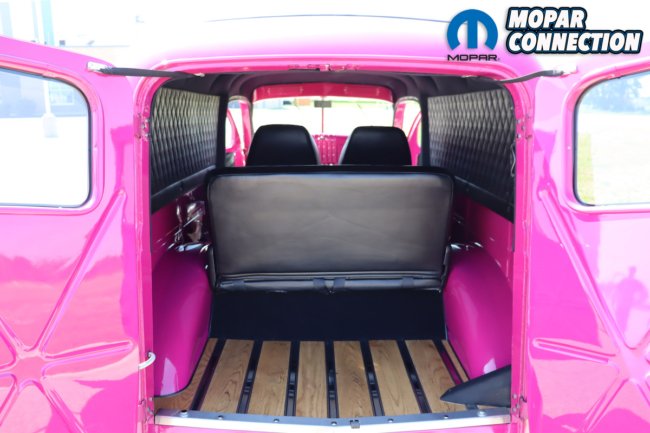
It was a rainy Saturday at Moparfest, in New Hamburg, Ontario, which is the location of Canada’s largest all-Mopar show, when fate intervened. While strolling through the vendor area, Bob spotted the front end of a truck peeking out from beneath a tarp. Intrigued, he turned to Candis and asked what she thought. “The lines were so beautiful,” she said. “I had never seen another one like it.” In that instant, they both knew—they had found their project. That hidden gem would become the foundation of Candis’ new ride.
After purchasing the Fargo from Dwayne Tschirhart, Bob and Candis hauled it home and rolled it into their backyard workshop—marking the start of a bold and deeply personal restoration journey. At first, Candis envisioned it as a stylish summer cruiser, something cool to drive to school. Ironically, she didn’t even have her driver’s license yet. But that didn’t matter. Fueled by excitement and a shared dream, the duo dove in, carefully dismantling the truck piece by piece, each bolt and panel bringing them closer to their vision.

It wasn’t long before reality set in. The complexity of the build quickly outpaced their experience, and they realized they were in over their heads—reinforcements were needed. Yet as the work progressed, Candis began to see her original idea of a simple “driver” shift dramatically. The project took on a life of its own. The Fargo was no longer just a driver; it was becoming a showpiece. The dream of just a cruiser gave way to the pursuit of perfection, and the truck began its transformation into a true show queen. As the build continued, Candis reflected on how her family grew alongside the project: “We had more and more great people wanting to be involved.”
This Fargo was not restored to its original specifications but was instead transformed into a hot rod. The initial focus was on the bodywork, where the lower sections of the passenger and rear doors were reconstructed with metal to replicate the original design.
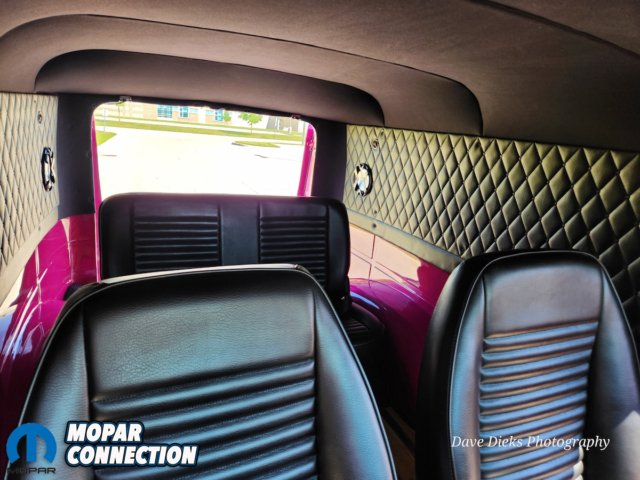
To achieve the desired stance for the Fargo, the suspension was lowered by 13 inches. While Candis requested wooden slats for the truck bed, the lowering of the vehicle affected the feasibility of this addition. The truck was lowered so much that the rear end came up through the floor. Candis caved in by adding a back seat to cover it up, which she admits comes in handy when more than two people ride with her.
Candis vividly recalls the moment the topic of paint color came up. When she suggested pink, the guys on the build team burst into laughter— “No way!” they teased. But Bob didn’t laugh. He backed her up without hesitation. Together, they sifted through countless shades, searching for the perfect hue. In the end, Mopar’s FM3 “Panther Pink” stole the show. Bold, vibrant, and full of attitude—it was the perfect match for the truck’s personality and Candis’s vision.

Frans and Danny Michiels’ talents showed with body and paint. When all was said and done, the rest of the guys came around too, loving the color. They started with grey primer instead of the white, which makes it seem a different shade compared to any original Panther Pink color. The Fargo received the basecoat and then the clear coat to give it the miles-deep finish.
Bevin Finlay did the custom graphics on the “Cotton Candie” logo. Candis felt that his skills were underutilized on a simple logo, but it would have been a shame to not have his personal touch on the truck. That logo is all airbrushed, folks, and not a decal.
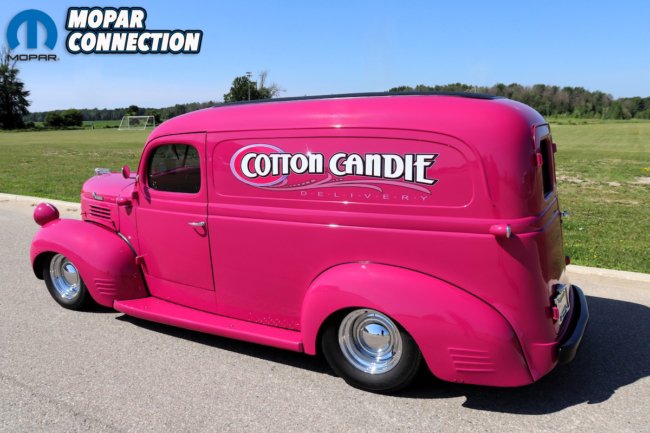
The Fargo boasts a blend of vintage charm and custom flair. Chrome emblems and handles add a touch of elegance, while subtle details such as turn signal lights are located close to the hood and cab. Chrome strips accent the grill, contrasting the sleek black bumpers. The bumpers were trimmed and tucked, adding to the custom look. The Fargo has retained its traditional roof insert, which enhances the vehicle with a touch of classic nostalgia.
With the bodywork and paint complete, the focus shifted to the heart of the Fargo—its engine and drivetrain. Out went the original flathead six-cylinder, replaced by a roaring 1968 Mopar 383 cubic inch big block, bored .030 over for added muscle. A Mopar Performance Purple camshaft was installed to boost horsepower and torque, giving the truck serious street presence. Topping off the build, 906 cast iron heads—a perfect match for the 383—were paired with an Edelbrock intake manifold and a Holley 650 double pumper carburetor, fed by a functional air scoop that channels fresh air straight into the beast.
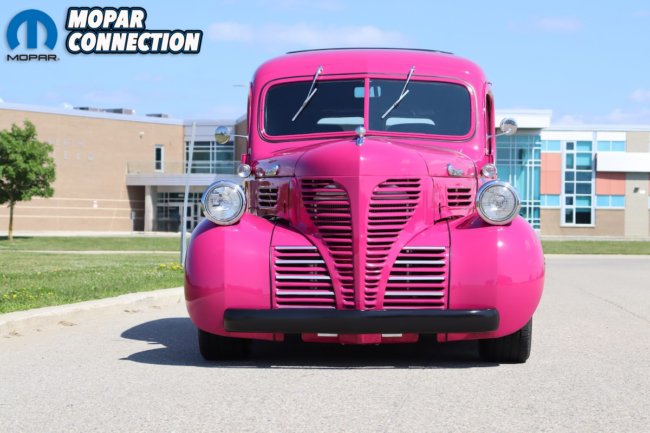
The engine compartment features Mopar valve covers and a chrome fan and pulley system. High-performance wires supply the necessary spark for fuel ignition. The Fargo uses two fans—a standard fan and an additional electric fan—due to the size of the engine under the butterfly hood. The radiator is custom-made from aluminum.
To get the power to the road, the Fargo is equipped with a Mopar A-727 automatic transmission paired with a Ford 9-inch rear end running 3.25 gears. The suspension features chrome coilovers, giving the truck a striking look both above and below. Rolling on Smoothie steel chrome reverse rims with chrome center caps, the Fargo rides confidently on B.F. Goodrich Radial TA tires—P235/60R15 in the front and beefier P275/60R15 in the rear—delivering both style and performance.
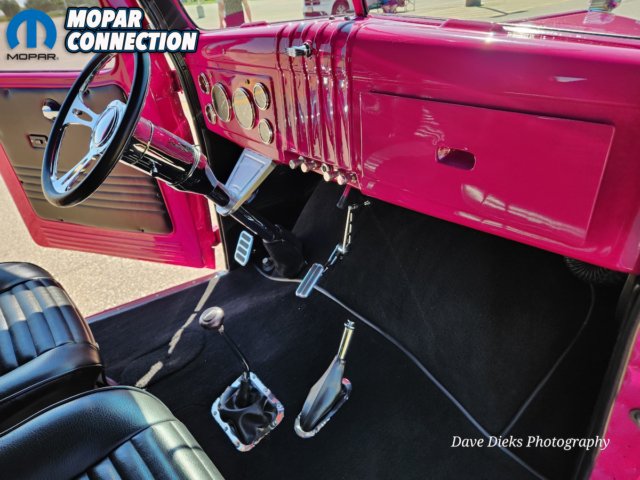
Upon its purchase, the Fargo lacked an interior; the front seats were sourced from a Chevy S10 and the rear seat was taken from a minivan. Both were upholstered in black fabric with a diamond stitch pattern. The dashboard is equipped with reproduction vintage gauges, including a large speedometer and tachometer, as well as smaller gauges for fuel, water, temperature, and voltage.
Candis has many people to thank for making this dream come true. Maurice Pieper helped with welding, fabrication, and assembling work. Larry Boehm for wiring and tuning, and Jimmy Kennedy and Justin Wolf for being extra hands when needed. Frans and Danny Michiefs for the fantastic body and paint work. Bevin Finlay for the graphic works and Horton’s Hot Rods and Rudy Held for parts and always making sure Candis got the “shiny” stuff. And most importantly, family. Candis states, “My dad, for always being my biggest fan and encouraging me to chase this crazy dream, and my mom and sisters, for supporting a young girl in a man’s hobby.”
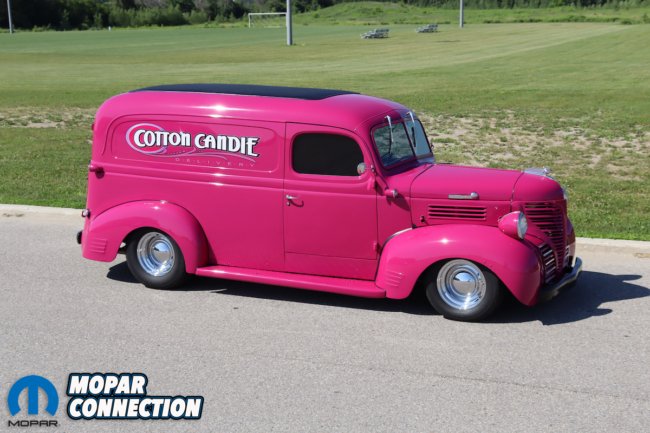
The big thrill for Candis was when she was at university when the truck was getting the finishing touches for the Performance World car show. It was at this show that she had seen it completed and on display. She must thank her professor for allowing her to be there all weekend (Thursday to Sunday).
Candis had a midterm exam scheduled and explained why she needed to reschedule. He looked at her as if her story of showing a hot rod at 19 in Toronto was too wild to be fake and told her to send a photo of her truck; he would let her write the exam the week after.
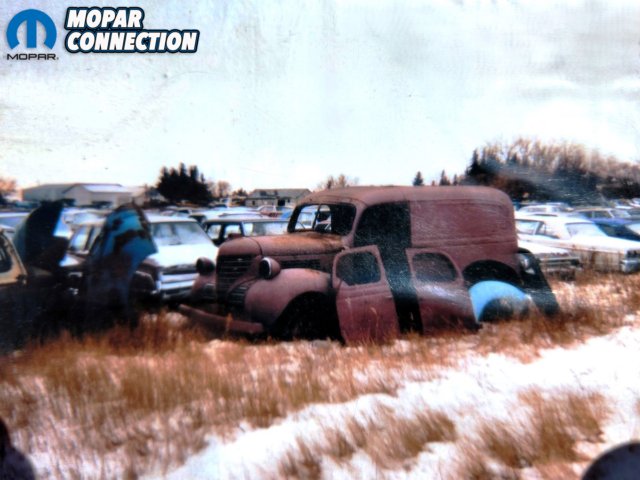
At that show Candis had won a total of 6 awards for that weekend, including Best Mopar. She had won numerous awards at local shows since then, but nothing she says will top Performance World.
In conclusion, Candis stated, “Being a young woman in a predominately male hobby has been the exact opposite of how most people would think. I have made the most incredible friends and have many “car show grandpa’s” that have cheered me on along the way, as well as taught me all the curse words I know.”



